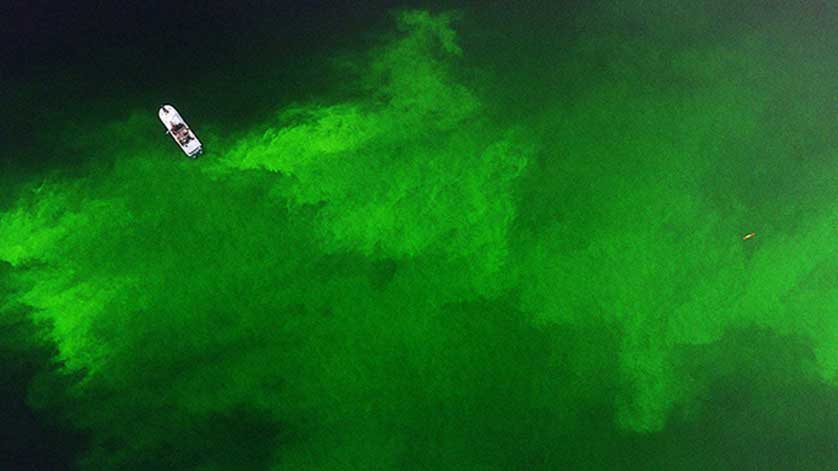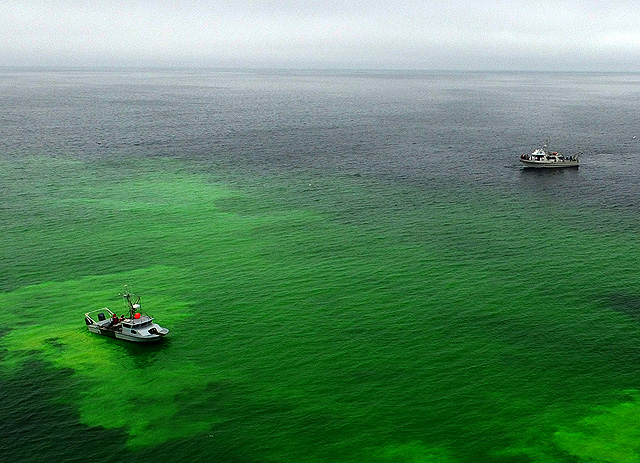Testing an Undersea Robot That Can Detect and Map Oil Spills

In late September 2018, MBARI engineers demonstrated a new use for MBARI’s long-range autonomous underwater vehicles (LRAUVs)—detecting and tracking oil spills.
Working with the US Coast Guard and collaborators at Woods Hole Oceanographic Institution (WHOI), MBARI engineers outfitted an LRAUV with special instruments (fluorometers) that can detect oil in water. For the recent test in Monterey Bay, the team simulated an oil spill using non-toxic, biodegradable dye.
These days the Coast Guard is particularly interested in testing robots that can find and track oil spills under ice. This capability will be needed as ship traffic and oil exploration expands in the Arctic Ocean. The LRAUV used in these experiments also carried instruments that will allow the vehicle to navigate beneath sea ice by bouncing sound waves off the underside of the ice. For its recent test in Monterey Bay, the LRAUV was placed in the water and sent toward the plume. After instruments on the LRAUV detected the plume, the robot continued on its path, measuring the concentrations of dye within the plume and recording the areas of highest intensity. When the robot crossed the outer edge of the plume, it automatically turned around and headed back toward the plume.
By doing this repeatedly, the robot was able to track the plume as it drifted through the water for several hours. This test showed that the robot could meet the Coast Guard’s initial goals for the vehicle.
 During the recent dye experiment, MBARI researchers released biodegradable dye from the research vessel Paragon (left) while collaborators from the US Coast Guard and other organizations watched from a second boat nearby. Image: Todd Walsh © 2018 MBARI
During the recent dye experiment, MBARI researchers released biodegradable dye from the research vessel Paragon (left) while collaborators from the US Coast Guard and other organizations watched from a second boat nearby. Image: Todd Walsh © 2018 MBARI
“Everything worked well during the field test.” said Brett Hobson, MBARI’s principal investigator on this project. “The plume tracking still needs a little adjustment, but we’re working on that.” Hobson collaborated with several other MBARI engineers on this project, including Brian Kieft and Yanwu Zhang. MBARI Audio Video Specialist Todd Walsh operated an aerial drone that photographed the dye plume from the air.
This research was funded by a grant awarded by the US Department of Homeland Security to The University of Alaska’s Arctic Domain Awareness Center (ADAC). In addition to Hobson, another primary investigator on this project was Jim Bellingham, director of the Center for Marine Robotics at WHOI. In his previous position as an engineer at MBARI, Bellingham conceptualized and helped design the first LRAUV. Following the recent field tests, the new oil-spill tracking LRAUV was handed off to researchers at WHOI and the Coast Guard for additional testing.
The present study builds on a previous MBARI effort to track oil in the deep waters of the Gulf of Mexico following the Deepwater Horizon oil spill, using one of MBARI’s larger “Dorado-class” autonomous underwater vehicles.
Article by Kim Fulton-Bennett

